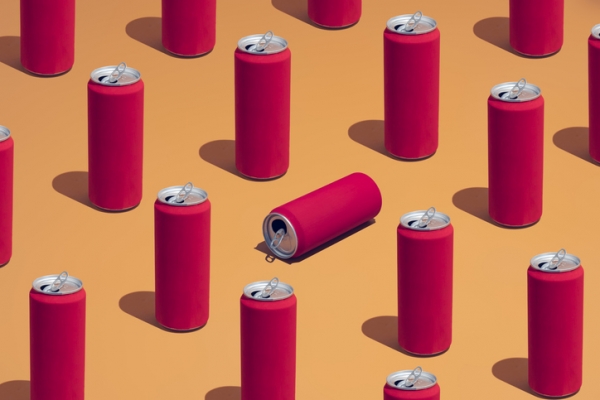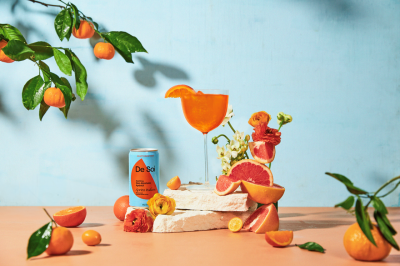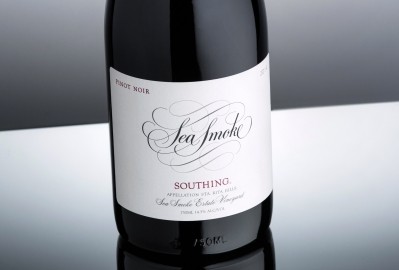From sparkling wine to RTDs: Five trending categories in the UK alcohol market

At first glance, the picture for the UK alcohol market is not one of growth. In fact, the UK is expected to see volume and value declines of 1% CAGR over the next five years, according to stats recently published by market analysts IWSR.
This lackluster performance is no surprise against global backdrops, with the total beverage alcohol market only expected to rise 1% per annum, 2022-2027.
But there are growth opportunities to be found…
English sparkling wine and crémant
Wine, as an overall category, is not growing in the UK - or indeed globally. IWSR figures show a long-term decline continuing in 2023 with volumes falling 4% in the UK. The category is expected to shrink further, with an anticipated 2023-2028 CAGR of -3%.
Sparkling wine has traditionally been a reliable growth driver, but was dragged down 5% last year by declines in Champagne and Prosecco.
Bucking the trend, however, is English sparkling wine. Top English wine producer Chapel Down, for example, saw sparkling wine sales grow 25% in 2023, compared to a 7% decline in still wine.
France’s cheaper and more accessible alternative to Champagne, Crémant, also experienced continued growth (the wine is simply a sparkling wine that does not qualify as Champagne because it is made outside of the Champagne region).
Low alcohol
Growth rates of the no- and low-alcohol segment have outperformed the overall UK total beverage alcohol market spectacularly.
Against overall declines of 2% in 2022-2023, the no/low alcohol segment showed volume growth of 47%. And looking forward, the forecast volume CAGR is 19% for 2023-2028, according to IWSR.
In value terms, the no/low-alcohol segment is expected to add incremental value of £0.8bn by 2028.
With volume sales of low alcohol almost doubling in 2023, IWSR predicts considerable growth over the coming year, particularly driven by low-alcohol beer.
There are two key reasons for the growth in low and no. As is the case across the globe, consumers are increasingly seeking to moderate their alcohol intake. But in the UK there’s another factor at play: excise duty changes made last year now work in favor of brands with a lower alcohol content.
Summer events
Consumption in the UK is likely to be boosted by two major sporting events. First up is the UEFA Euro 2024, with England into the quarter-finals. In a soccer-mad country, England’s performance on the field also affects sales in the pubs.
CGA’s latest BrandTrack survey shows that more than three-quarters of British consumers say they’ll probably go to bars and pubs more often when the football tournament is on (a statistic that is, of course, likely to vary according to England’s presence; while Scotland is out of the tournament).
Cost-of-living challenges, however, do mean that some consumers will choose to watch matches at home – but may still buy alcohol to accompany them.
Next up is the Olympics, which starts on July 26.
These events are likely to bring around a consumption boost: although this is unlikely to have a lasting impact past the summer, acknowledges IWSR.
Summer also traditionally boost alcohol sales: but that all comes down to the weather.
RTDs
As in the US, RTDs are expected to see continued growth, having capped a strong period of growth with a 2% increase in volumes last year, according to IWSR.
Premium cocktails are gaining traction, and canned RTDs are now being joined by a wider range of bottled ready-to-serve cocktails and spirit derived liqueurs.
However, the category still faces some challenges in overcoming ‘alcopop’ preconceptions; while many consumers still view wine in cans with a certain level of skepticism.
Tequila and agave
Spirits were hard-hit last year, with volumes down 5%. This was dragged down by the once-unstoppable gin category, which is now struggling to keep up with past ambitions and, in fact, saw volumes plummet 14%.
But – unsurprisingly for anyone following US trends – agave is on the rise. The category saw 4% volume increase in 2023, although this does not match up to the 2018-2023 CAGR of 13%. Moving forward, expect 2% CAGR from 2023-2028.
Tequila and other agave drinks are changing from a shot serve in trendy, high-tempo venues, to a beverage for sipping and enjoyed in a wider variety of locations and occasions.
Across the spirits categories, those that feature prominently in cocktails are likely to have the edge.













